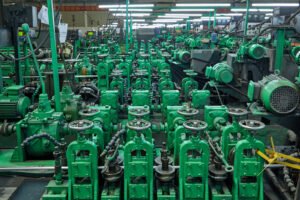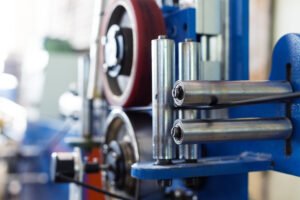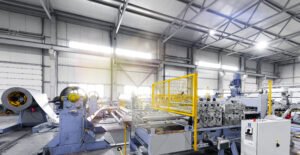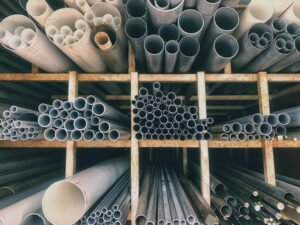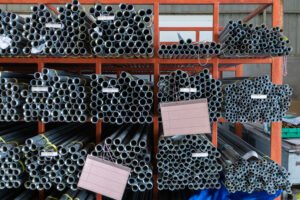Pickling & Passivation: Preventing Weld Decay in 304/316 Pipe
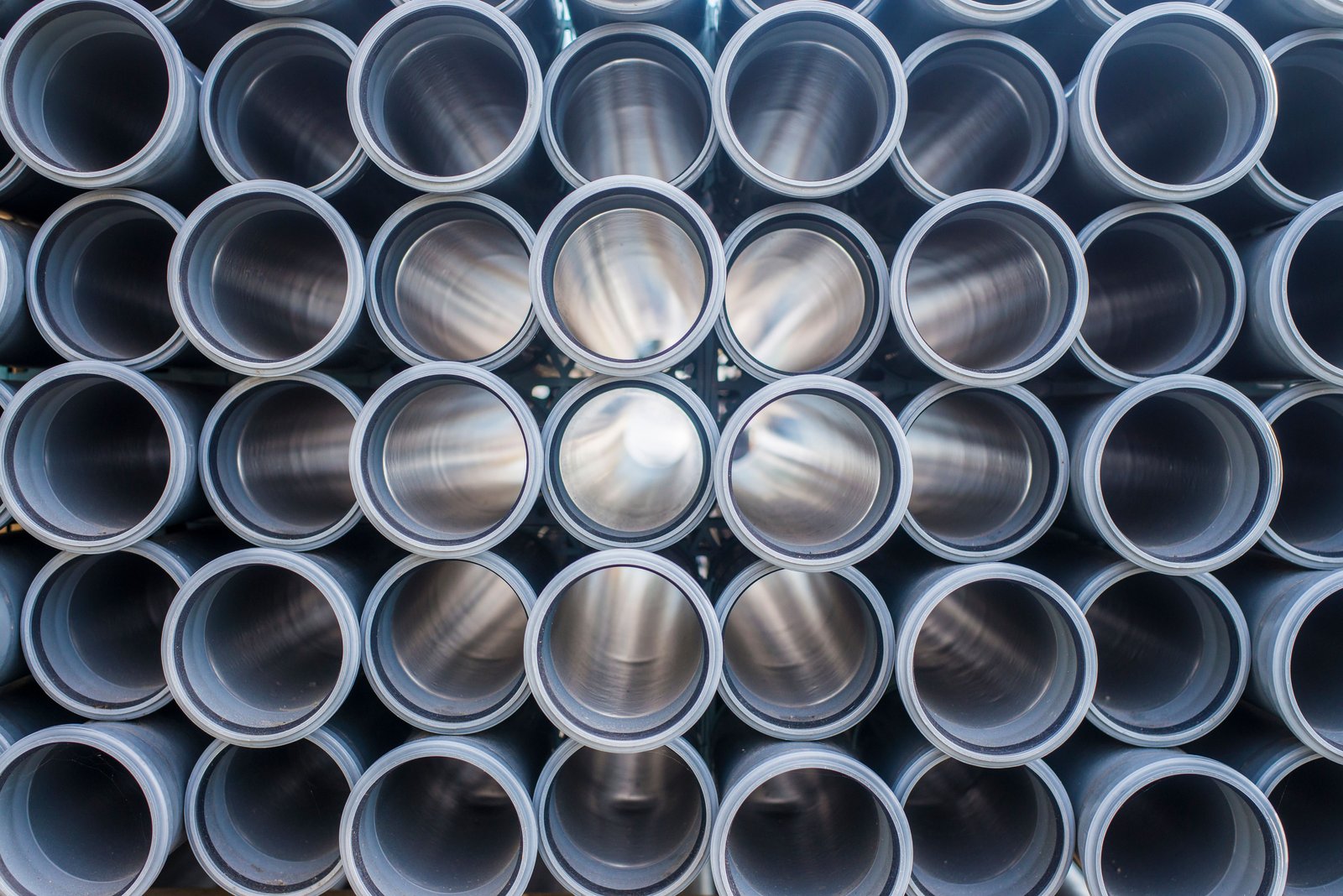
Have you ever seen a stainless steel pipe system fail prematurely, especially around the welds? This unexpected corrosion can halt operations and lead to costly repairs. The real issue is that the high heat from welding fundamentally changes the steel's structure, creating a hidden vulnerability to rust.
Pickling and passivation are essential post-weld treatments that prevent this type of failure, known as weld decay. These chemical processes remove the compromised, heat-affected areas and then restore the steel's natural, passive protective layer, ensuring maximum corrosion resistance and extending the pipe's service life.
As someone who has been in the stainless steel industry for years, I’ve seen countless projects succeed or fail based on how they handle the final steps after fabrication. A weld might look perfect on the outside, but microscopic changes can create a pathway for corrosion. It’s a silent threat that can undermine the integrity of an entire project. Understanding this process is not just for metallurgists; it's crucial for anyone who relies on the long-term performance of stainless steel.
The integrity of stainless steel, particularly popular grades like 304 and 3161, hinges on its passive chromium-oxide layer. Welding, a process of intense, localized heat, disrupts this delicate balance. This creates a "sensitized" area that is no longer truly stainless. In my experience at MFY, we often advise clients that the cost of proper post-weld treatment is minuscule compared to the potential cost of system failure, downtime, and replacement. A study by NACE International2 estimated the global cost of corrosion at $2.5 trillion annually, a significant portion of which is preventable. This isn't just an operational issue; it's a critical financial and safety consideration that demands attention from the planning phase through to final inspection.
What causes weld decay in 304/316 stainless steel pipes?
Your fabrication team has just completed the welding, but are the pipes truly ready for service? The intense heat of welding introduces a hidden weakness. This "weld decay" can lead to catastrophic failures, especially in corrosive environments, jeopardizing both safety and your investment.
Weld decay is caused by a phenomenon called sensitization. During welding, in a temperature range of approximately 450-850°C, the carbon in the steel combines with chromium to form chromium carbides along the grain boundaries. This depletes the chromium needed to maintain the passive protective layer, inviting intergranular corrosion.
This microscopic change is the root cause of what can become a macroscopic failure. Imagine a strong brick wall, but the mortar holding the bricks together has been replaced with a weaker, water-soluble material. The wall looks fine, but the moment it's exposed to rain, it begins to crumble from the inside out. This is precisely what happens with weld decay. The corrosion attacks the grain boundaries—the "mortar" of the steel—leading to a loss of mechanical strength and integrity. I recall a client in the food and beverage industry in Southeast Asia who faced this exact issue. They installed a new 304 stainless steel piping system, but within months, they detected contamination in their product. The source was traced back to corroded welds that were not properly treated. The heat-affected zones had become active sites for corrosion, leaching metallic ions and compromising the sterile environment. This incident underscores that weld decay isn't just a structural problem; it's a critical issue of process integrity and product safety. Understanding this metallurgical transformation is the first and most vital step in preventing it.
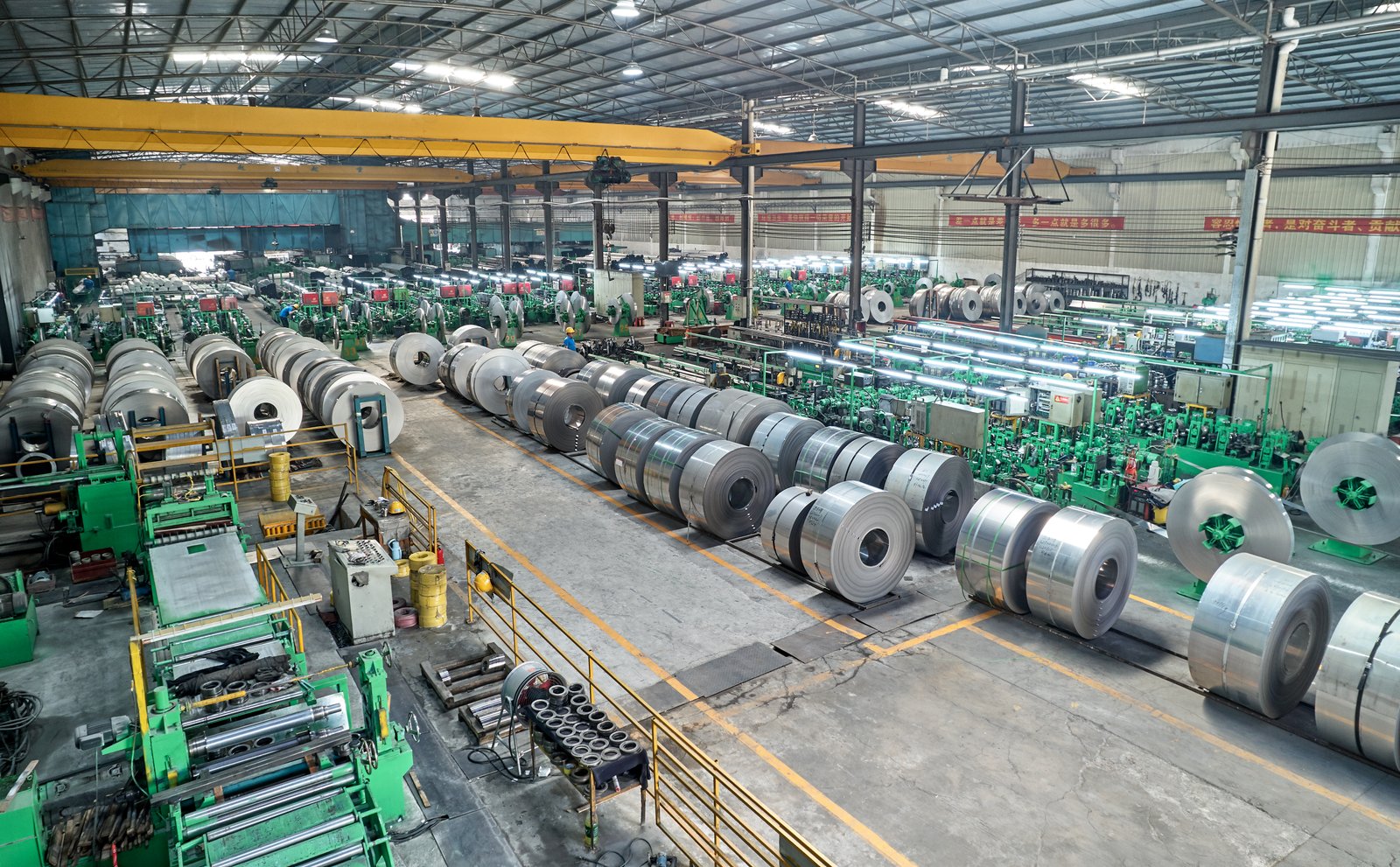
The Chemistry of Sensitization
The phenomenon of sensitization is a well-understood metallurgical process, yet it remains a common cause of failure in austenitic stainless steels like grades 304 and 316. It occurs when the material is held within a critical temperature range, typically between 450°C and 850°C (840°F to 1560°F). This is precisely the temperature profile experienced in the heat-affected zone (HAZ) adjacent to a weld. During this thermal exposure, the carbon present in the steel has a strong affinity for chromium, and they combine to form chromium carbide (Cr₂₃C₆) precipitates.
These carbide precipitates form preferentially along the grain boundaries of the metal's crystalline structure. As the carbides grow, they draw chromium from the immediate surrounding area. The result is a narrow band along the grain boundaries that is severely depleted of chromium, often falling below the 10.5% threshold required for stainless steel to form its protective passive layer. While the bulk of the steel grain remains unaffected, these depleted boundaries become highly anodic compared to the surrounding metal, creating a perfect pathway for preferential corrosion, known as intergranular attack.
This is why weld decay is so insidious. A visual inspection of the weld bead itself may reveal no defects, and the pipe may appear perfectly sound. However, the damage lies in a microscopic network of chromium-depleted pathways. When exposed to a corrosive environment, these pathways are attacked aggressively, causing the steel to lose its strength and ductility from within, often with little outward sign until failure is imminent. This is why post-weld inspection must go beyond the visual and include considerations for the unseen metallurgical changes.
Comparing Susceptibility: 304 vs. 316 and the 'L' Grades
While both 304 and 316 are susceptible to sensitization, their relative vulnerability is closely tied to their carbon content. Standard Grade 304 stainless steel typically has a maximum carbon content of 0.08%, whereas Grade 316 has a similar limit. This level of carbon provides ample fuel for the formation of chromium carbides during welding. The addition of molybdenum in Grade 316 offers superior resistance to pitting and crevice corrosion, particularly in chloride environments, but it does not prevent the mechanism of sensitization itself.
To combat this problem directly, manufacturers developed low-carbon or 'L' grades, such as 304L and 316L. These grades have a maximum carbon content of just 0.03%. This drastic reduction in carbon leaves insufficient amounts to form a continuous network of chromium carbides at the grain boundaries during a typical welding thermal cycle. Consequently, the chromium depletion is significantly minimized, and the resistance to intergranular corrosion is vastly improved.
For a clearer comparison, consider the following table which highlights the critical differences in carbon content and their implications. This data, drawn from industry standards like ASTM A240, illustrates why selecting the right material grade is the first line of defense against weld decay, especially for sections that will be welded and put into corrosive service without post-weld heat treatment.
| Grade | Max Carbon Content (%) | Key Characteristic | Typical Application Weldability |
|---|---|---|---|
| 304 | 0.08% | Standard austenitic grade | Susceptible to sensitization; post-weld treatment often needed. |
| 304L | 0.03% | Low carbon version of 304 | Excellent weldability; resistant to sensitization. |
| 316 | 0.08% | Molybdenum-enhanced corrosion resistance | Susceptible to sensitization; post-weld treatment often needed. |
| 316L | 0.03% | Low carbon version of 316 | Excellent weldability and enhanced corrosion resistance. |
The Critical Role of the Heat-Affected Zone (HAZ)
The Heat-Affected Zone (HAZ) is the region of the base metal that has not been melted during welding but whose microstructure and properties have been altered by the heat. It's crucial to understand that weld decay does not typically occur in the weld filler metal itself (which is often formulated with low carbon or stabilizing elements) or in the unaffected parent metal. The failure originates squarely within the HAZ. This zone experiences the perfect temperature gradient—hot enough to induce sensitization but not hot enough to melt and re-solidify.
During the welding process, a thermal gradient is created, extending from the molten weld pool outwards into the parent pipe. Somewhere along this gradient lies the band that falls within the 450-850°C sensitization range. The width of this band and the time spent within this temperature range depend on factors like the welding process used, the heat input, and the thickness of the material. Thicker materials and higher heat inputs tend to create a larger and more pronounced HAZ.
I remember a case involving an engineering contractor working on a coastal desalination plant. They were using 316 pipes for saltwater intake lines. After a year in service, leaks began to appear, not on the welds, but in a fine line just millimeters away from them. Our analysis confirmed it was classic weld decay in the HAZ. The contractor had used standard 316 instead of 316L and had skipped the pickling and passivation step to save time. The cost of shutting down the system, replacing the failed sections, and implementing the correct procedure far exceeded the initial perceived savings. This case serves as a powerful reminder that the focus of prevention must be on protecting the HAZ.
Sensitization causes weld decayTrue
Sensitization occurs when chromium combines with carbon during welding, depleting the protective chromium oxide layer and making the steel vulnerable to corrosion.
304L is immune to sensitizationFalse
While 304L is more resistant due to its lower carbon content, it's not completely immune to sensitization, especially under prolonged exposure to high temperatures.
How does pickling help in addressing weld decay in 304/316 pipes?
You now understand that welding creates a dangerous, chromium-depleted zone. This compromised surface is an open invitation for corrosion. Left untreated, this area will fail, undermining your entire system's integrity and forcing costly, unplanned shutdowns that damage your operational efficiency.
Pickling offers a decisive solution by chemically removing the problem. This process uses a powerful acid mixture to dissolve the heat-affected zone, along with any embedded contaminants and heat tint, exposing a fresh, metallurgically clean surface and completely eliminating the sensitized layer.
Think of pickling as a necessary "surgical" step. It’s not just cleaning; it is the targeted removal of a compromised layer of metal that is no longer fit for service. The process is aggressive by design. When we at MFY supply pipes for critical applications, like for chemical processing plants in India, we always have a detailed discussion about post-fabrication treatment. One client was constructing a series of reactors using 316L pipes. The welds were numerous, and each one was a potential failure point. By implementing a strict pickling protocol using a hydrofluoric and nitric acid paste, they systematically removed the heat-affected zones from every single joint. The immediate result is a visually uniform, dull matte-gray finish—a clear indicator that the contaminated, chrome-depleted surface and oxide scales have been removed. This clean slate is essential because you cannot build a strong defense (the passive layer) on a weak foundation. Pickling ensures the foundation of your corrosion defense is solid, uncompromised stainless steel, ready for the final step of passivation. This rigor is what separates a system that lasts for decades from one that fails in months.
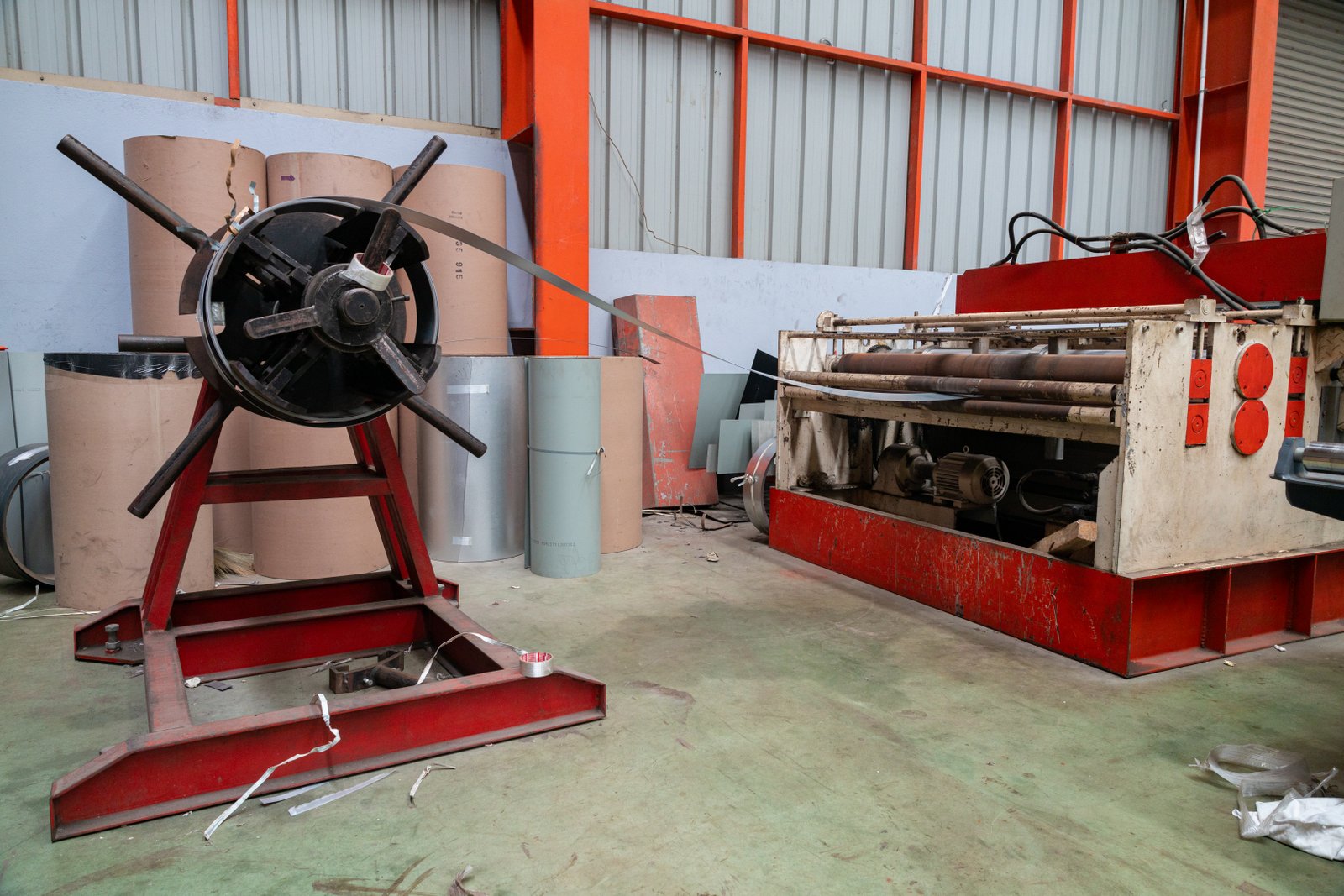
The Chemical Action of Pickling Acids
The effectiveness of pickling lies in its potent chemical formulation, almost always a combination of nitric acid ($HNO_3$) and hydrofluoric acid ($HF$)3. These two acids work in tandem to achieve what one could not do alone. Hydrofluoric acid is the workhorse responsible for attacking and removing the tough, complex oxide scale (often called heat tint) that forms during welding. More importantly, it is aggressive enough to remove the underlying layer of metal that has been depleted of chromium due to sensitization. It effectively etches away the compromised grain boundaries where chromium carbides have formed.
Nitric acid plays a dual role. It is a strong oxidizing agent that helps dissolve the metallic oxides and other contaminants loosened by the hydrofluoric acid. Furthermore, it begins the process of repassivation by creating an oxidizing environment, although the primary goal of passivation is addressed in a separate, subsequent step. The concentration of these acids, the temperature of the bath or paste, and the duration of the treatment are all critical parameters that must be tightly controlled. Insufficient time or concentration will fail to remove the entire sensitized layer, while excessive exposure can lead to over-etching and damage to the sound metal surface.
This controlled chemical removal is fundamental. It is not a cosmetic treatment. A study published in the Journal of Materials Engineering and Performance demonstrated that pickled and passivated weldments of 304 stainless steel4 exhibited corrosion resistance nearly identical to that of the unwelded parent metal in accelerated corrosion tests. In contrast, the as-welded samples showed severe intergranular attack in less than a quarter of the exposure time. This data provides clear, scientific validation for the necessity of pickling to restore the inherent corrosion resistance of the material after welding.
Case Study: Restoring Integrity in the Petrochemical Sector
The importance of pickling is perhaps best illustrated by a real-world application. We worked closely with a major engineering contractor in the Middle East tasked with constructing a new sour gas processing facility. The project involved thousands of feet of 316L stainless steel piping, which would be exposed to hydrogen sulfide ($H_2S$)—a highly corrosive compound. Even with the use of 316L grade, the risk of any surface imperfection or slight sensitization becoming an initiation site for sulfide stress cracking was unacceptably high. The client understood that the integrity of every single weld was paramount to the safety and longevity of the plant.
Our role at MFY went beyond simply supplying the pipes. We consulted on their post-weld treatment protocol. Due to the vast scale of the project, immersion pickling of entire pipe spools was impractical. We, therefore, advised on the use of a high-adhesion pickling paste. Their quality control teams were trained to apply the paste specifically to the weld bead and the surrounding HAZ. After the prescribed contact time (typically 45-90 minutes, depending on ambient temperature), the paste was thoroughly rinsed off with deionized water, neutralizing any residual acid.
The results were validated through rigorous testing. Randomly selected weld joints were subjected to post-treatment dye penetrant tests to check for any surface cracking and ferroxyl tests to detect any free iron contamination. The treated welds passed with a 100% success rate. By investing in this meticulous pickling process, the client effectively eliminated the risk of premature failure due to weld decay. This proactive approach to corrosion management is a hallmark of successful projects in the petrochemical industry, where the consequences of failure are severe. It demonstrates that pickling is not an expense, but a critical investment in asset integrity.
Addressing More Than Just Weld Decay
While the primary motivation for pickling welds is to remove the sensitized HAZ, its benefits extend much further. The process is highly effective at removing a host of other surface contaminants that can compromise the corrosion resistance of stainless steel. One of the most common issues is "heat tint" or "weld discoloration." These colored bands seen next to a weld are not just cosmetic; they are thick layers of iron and chromium oxides that are less protective than the proper passive film. Pickling completely removes these oxide layers.
Another critical issue is iron contamination. During fabrication, if carbon steel tools, grinding wheels, wire brushes, or handling equipment are used on stainless steel, they can embed microscopic iron particles into the surface. These particles act as localized corrosion sites, leading to pitting and rust spots that can be mistaken for a defect in the steel itself. I have personally inspected facilities where entire piping systems showed signs of rusting simply because the installers used carbon steel brushes to "clean" the welds. Pickling effectively dissolves and removes this embedded iron, restoring the uniform surface chemistry required for proper passivation.
Furthermore, the process cleans away other fabrication debris like weld spatter, grease, oil, and organic compounds. Each of these contaminants can interfere with the natural formation of the passive layer or create crevices where corrosive agents can concentrate. By performing this single, comprehensive cleaning step, you ensure that the surface is in the ideal condition for the subsequent passivation process. It's a holistic surface restoration that addresses a multitude of potential problems at once, ensuring the pipe's performance matches the inherent qualities of the stainless steel grade selected.
Pickling removes chromium-depleted zonesTrue
Pickling chemically dissolves the heat-affected zone where chromium has been depleted during welding, restoring corrosion resistance.
Heat tint is purely cosmeticFalse
Heat tint represents thick, less protective oxide layers that must be removed through pickling to prevent corrosion.
What role does passivation play in preventing weld decay?
Your pipe surface is now pickled and metallurgically clean, but it's also highly active and vulnerable. Exposed to the elements, this raw surface can begin to corrode almost immediately. This state of vulnerability could quickly undo all the corrective work of pickling, leaving your asset exposed.
Passivation is the crucial finishing step that rebuilds the steel's natural defense. It's a chemical process that rapidly grows a uniform, robust, and corrosion-resistant chromium oxide layer, providing a durable shield far more reliable than would form naturally in the air.
If pickling is the surgery that removes a problem, passivation is the advanced healing process that builds a strong barrier against future infection. While stainless steel is inherently "stainless" because it can form this protective passive layer on its own in the presence of oxygen, this natural process is slow, can be non-uniform, and is easily compromised by atmospheric or surface contaminants. Chemical passivation, on the other hand, is a controlled, engineered process that accelerates the formation of a much higher quality passive film. It typically uses nitric acid or citric acid5, which act as powerful oxidizing agents. They remove any remaining free iron from the surface (a common contaminant that pickling might not have fully eliminated) and create an oxygen-rich environment that forces the chromium at the surface to react and form a dense, non-porous layer of chromium oxide ($Cr_2O_3$). This engineered layer is significantly more protective and consistent than one left to form by simple air exposure, which is why it is mandated by industry standards like ASTM A3806 for critical applications.
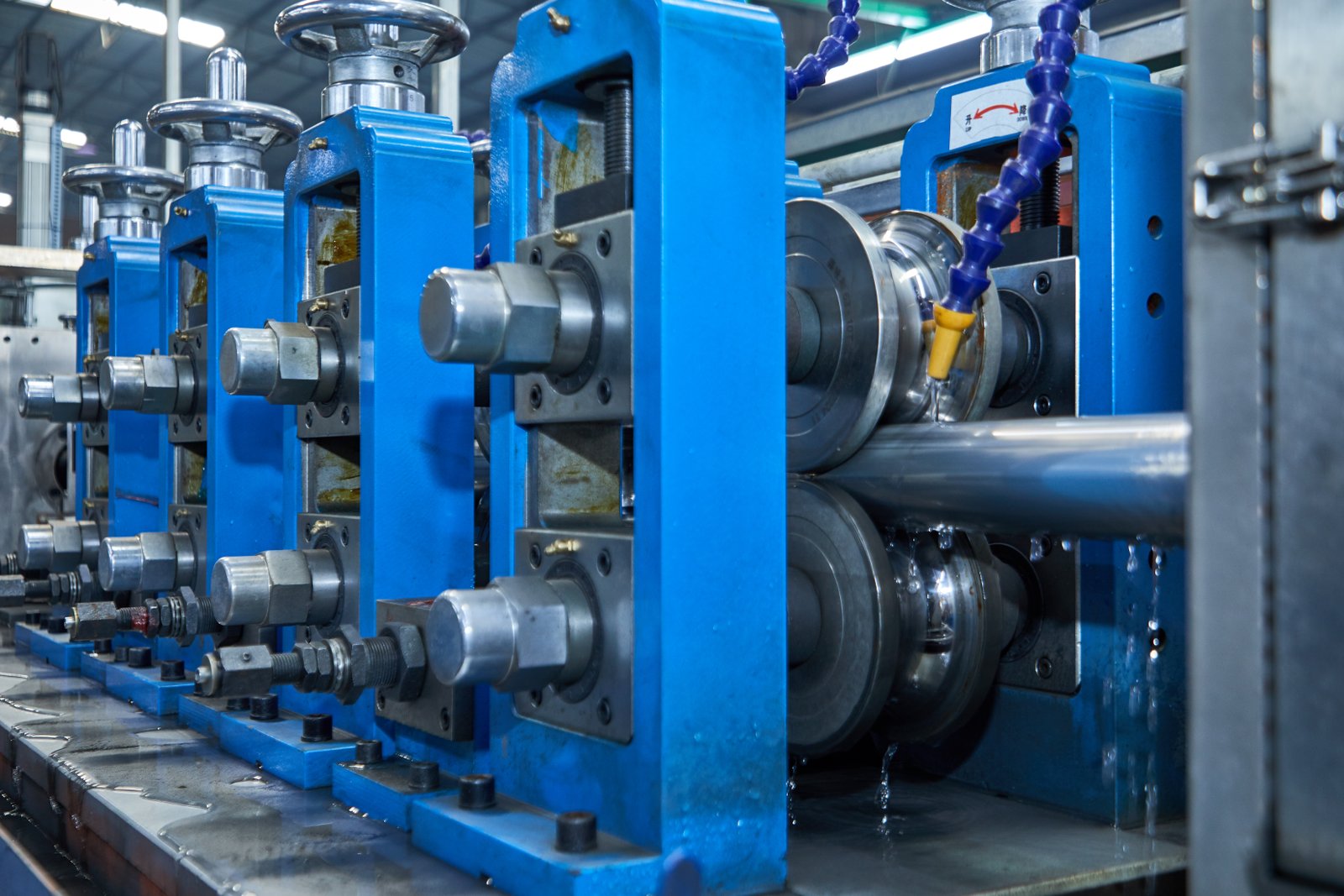
The Formation of the Passive Layer (Chromium Oxide)
The remarkable corrosion resistance of stainless steel is not due to the bulk metal itself being inert. Instead, it relies entirely on the presence of a very thin, tenacious, and transparent surface film known as the passive layer. This layer is primarily composed of chromium oxide ($Cr_2O_3$) and is only about 1 to 3 nanometers thick—thinner than a wavelength of light. Despite its minuscule thickness, this layer is highly effective. It is non-porous, so it isolates the underlying steel from the surrounding corrosive environment. It is also self-healing; if the surface is scratched, the exposed chromium will react with oxygen in the environment to instantly reform the protective oxide film.
The purpose of chemical passivation is to optimize and speed up the formation of this critical layer. After pickling, the steel surface is pristine but active. Passivation treatments, most commonly using nitric acid solutions, provide a highly oxidizing environment. This process selectively removes any remaining surface contaminants, particularly "free iron" particles that may have been redeposited during fabrication or cleaning. By removing the iron, the surface becomes richer in chromium. The oxidizing acid then provides the necessary oxygen to encourage a rapid reaction with this enriched chromium, forming a chemically resilient and uniform chromium oxide layer across the entire surface.
The quality of this chemically formed passive layer is superior to one formed by simple atmospheric exposure. It is thicker, more uniform, and has a more favorable chromium-to-iron ratio. Research using advanced surface analysis techniques like X-ray Photoelectron Spectroscopy (XPS) has shown that chemically passivated surfaces have a Cr/Fe ratio in the passive film that is 50-100% higher than in air-passivated films. This chromium-rich layer provides a significantly higher level of protection against a wide range of corrosive agents, ensuring the long-term performance of the component.
Passivation vs. Pickling: A Critical Distinction
A common point of confusion in the industry is the difference between pickling and passivation. While both are acid treatments, their purposes, chemical actions, and outcomes are fundamentally different. Misunderstanding this can lead to improper treatment and premature failure. Pickling is an aggressive, corrective process designed for heavy-duty cleaning and removal of metal. Passivation, in contrast, is a non-aggressive, finishing process designed to enhance the surface. One removes a damaged layer; the other perfects a clean one.
It's crucial to understand that passivation is not a substitute for pickling when dealing with weld decay. Passivation solutions, like nitric or citric acid, are not strong enough to remove the thick oxide scale (heat tint) or the underlying chromium-depleted, sensitized layer created by welding. Applying a passivation solution directly to a welded joint without first pickling it is ineffective. It may clean the surface slightly, but it leaves the critical metallurgical defect—the sensitized HAZ—completely intact and vulnerable to corrosion.
The following table provides a clear, side-by-side comparison to eliminate any ambiguity between these two essential processes. Understanding this sequence—first pickle to correct, then passivate to protect—is fundamental to achieving maximum corrosion resistance from your stainless steel assets.
| Feature | Pickling | Passivation |
|---|---|---|
| Primary Purpose | To remove thick oxide scale, weld heat tint, and the underlying chromium-depleted (sensitized) layer. | To remove free iron and other surface contaminants and chemically induce the formation of a high-quality passive layer. |
| Process Type | Highly aggressive; involves metal removal. | Mildly aggressive; involves minimal to no metal removal. |
| Typical Acids | Hydrofluoric Acid ($HF$) + Nitric Acid ($HNO_3$) | Nitric Acid ($HNO_3$) or Citric Acid ($C_6H_8O_7$) |
| When to Use | After welding, heat treating, or any process that creates heavy scale and sensitization. Must precede passivation. | After pickling, or after machining/fabrication that may have caused iron contamination but no heat scale. |
| Outcome | A clean, uniform, but active surface. | A clean, contaminant-free, and corrosion-resistant passive surface. |
Industry Standards and Verification of Success
To ensure that pickling and passivation are performed correctly and effectively, the industry relies on well-established standards and verification methods. The most widely recognized standard is ASTM A380/A380M, "Standard Practice for Cleaning, Descaling, and Passivation of Stainless Steel Parts, Equipment, and Systems." This comprehensive document provides detailed guidance on various cleaning and treatment methods, the acids and concentrations to be used, and the necessary safety precautions. A second key standard is ASTM A967, "Standard Specification for Chemical Passivation Treatments for Stainless Steel Parts," which focuses specifically on passivation procedures and acceptance criteria. Adhering to these standards is a mark of quality and ensures a predictable, reliable outcome.
However, simply performing the procedure is not enough; verification is essential. How do you know if the passive layer has been successfully formed? Several tests can be conducted. One of the most common is the copper sulfate test. A solution of copper sulfate is applied to the surface for a set period. If free iron is present on the surface, it will be displaced by the copper, leaving behind a visible copper-colored deposit. A surface that shows no copper deposit is considered passivated. Another method is a water-break test, where a clean surface will hold a continuous film of water, whereas a contaminated surface will cause the water to bead up or "break."
For more critical applications, sophisticated electronic instruments known as passivity testers are used. These devices measure the electrochemical potential of the surface, which is directly related to the quality and thickness of the passive layer, providing a quantitative measure of corrosion resistance. At MFY, our quality assurance protocol for high-specification pipe orders includes conducting such verification tests before shipment. This gives our clients documented proof that the material they are receiving has been treated to the highest standards and is ready to provide a long and reliable service life.
Passivation rebuilds steel's natural defenseTrue
Passivation chemically accelerates formation of a superior chromium oxide layer compared to natural air exposure, providing more reliable corrosion protection.
Passivation can replace pickling for weld decayFalse
Passivation acids are too weak to remove weld scale or chromium-depleted layers - pickling must always precede passivation for welded joints.
What are the best practices for pickling and passivation of stainless steel pipes?
You know that pickling and passivation are necessary, but an improper procedure can be ineffective or even damage the steel. Performing these chemical treatments without a clear, safe, and systematic approach introduces risks to both personnel and the material itself, negating the intended benefits.
Adhering to best practices is essential for a successful outcome. This involves meticulous pre-cleaning, strict adherence to chemical handling and safety protocols, precise control over time and temperature, and thorough rinsing and verification to ensure a perfectly treated, corrosion-resistant final product.
The foundation of any successful chemical treatment is preparation. Before any acids are introduced, the surface must be thoroughly degreased and cleaned of any oils, cutting fluids, dirt, or organic matter. These substances can mask the steel surface, preventing the pickling and passivation solutions from working uniformly. At MFY, we recommend using a high-quality alkaline cleaner or a suitable solvent, followed by a water rinse. Skipping this degreasing step is a common mistake that leads to patchy, inconsistent results. Once the surface is clean, the process can begin, but safety must be the absolute priority. Pickling acids, especially hydrofluoric acid, are extremely hazardous. Best practices mandate the use of full Personal Protective Equipment (PPE), including acid-resistant gloves, aprons, boots, and full-face shields. The work area must be well-ventilated, and emergency eyewash stations and showers7 must be readily accessible. A documented safety plan isn't just a recommendation; it's a necessity.
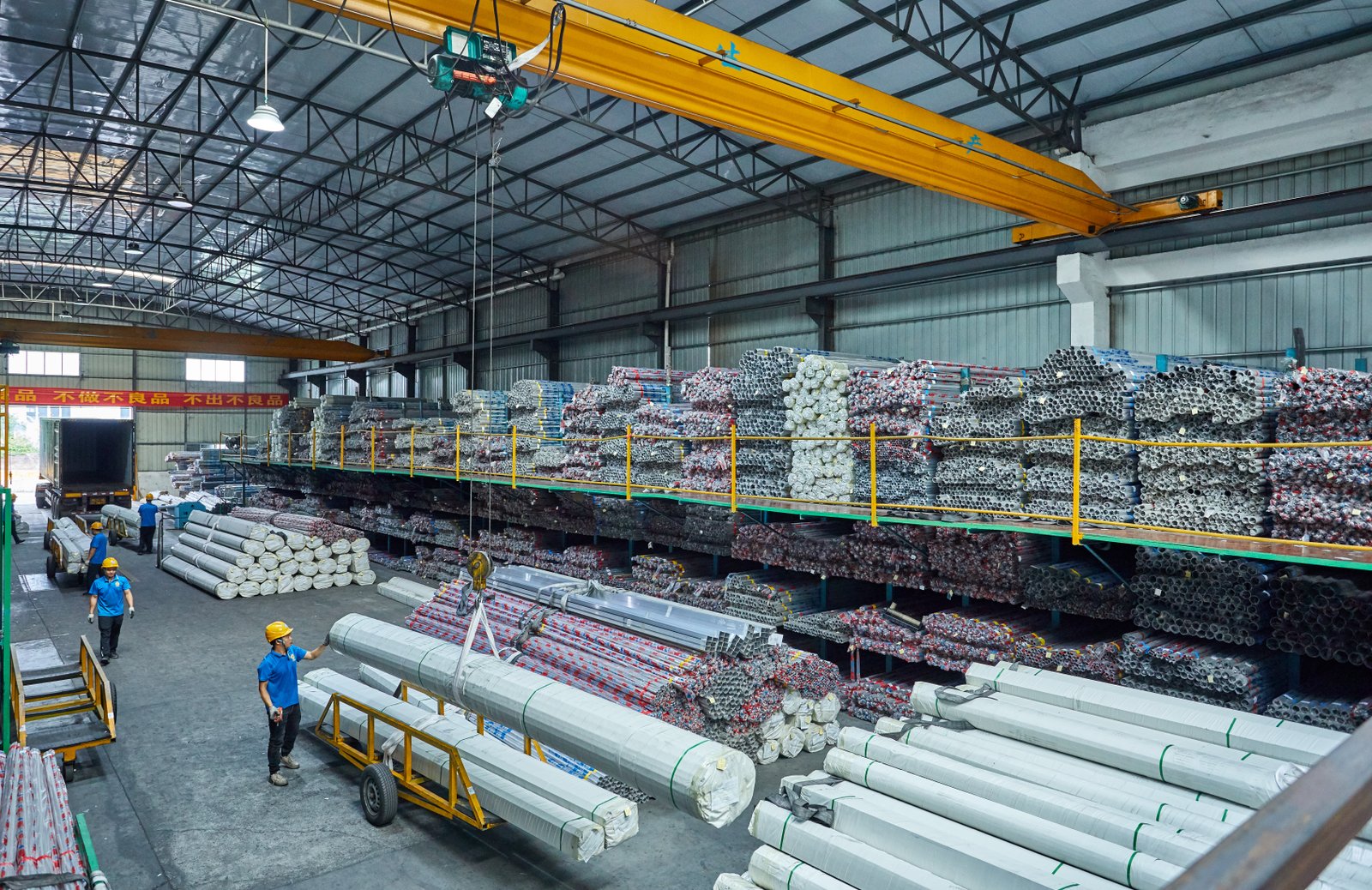
Step 1: Meticulous Pre-Cleaning and Preparation
The most critical and often overlooked step in the entire process is pre-cleaning. The chemical reactions involved in pickling and passivation depend on direct, unimpeded contact between the acid solution and the stainless steel surface. Any barrier, no matter how thin, will compromise the effectiveness of the treatment. Therefore, the first best practice is the complete removal of all organic and metallic soils from the surface. This includes grease, oils, lubricants, cutting fluids, paint markers, crayons, and any general shop dirt.
The standard procedure involves using an alkaline-based degreasing solution. These solutions are effective at emulsifying and lifting oils and greases. The parts can be immersed in a tank or the solution can be sprayed on. It is vital to ensure the cleaner reaches all surfaces, including the interior of pipes. Following the degreasing agent, a thorough rinse with clean water is required to remove all traces of the cleaning agent and the loosened soils. For stubborn contaminants or when using welded pipes that might have internal debris, a mechanical cleaning action, such as scrubbing with a nylon (never carbon steel) brush, may be necessary.
Only after the surface is certified to be free of all organic contaminants can one proceed to the pickling stage. A simple "water-break test" can be a good indicator of cleanliness at this stage. If a spray of clean water forms a continuous, unbroken film on the metal surface, it is generally considered clean. If the water beads up or separates, it indicates that residual oils or contaminants are still present, and the degreasing step must be repeated. Rushing this stage will invariably lead to a poor-quality finish.
Step 2: Controlled Acid Application and Dwell Time
With a clean and degreased surface, the acid application can begin. The choice of method—immersion in a tank, spray application, or manual application of a gel or paste—depends on the size and shape of the component and whether the work is being done in a shop or in the field. For large batches of smaller parts or pipe spools, immersion provides the most uniform coverage. For large tanks or on-site welds, gels and pastes are ideal as they cling to vertical surfaces and allow for targeted application on the weld and HAZ.
Regardless of the method, control is key. The two most important parameters to manage are concentration and time. The acid concentrations must be within the range specified by standards like ASTM A380. For pickling, this is typically a blend of hydrofluoric and nitric acid. The dwell time—the period the acid is in contact with the steel—is equally critical. This can range from 30 minutes to several hours, depending on the grade of steel, the thickness of the scale, and the ambient temperature. Higher temperatures accelerate the chemical reaction, so dwell times must be reduced accordingly to prevent over-etching.
It is best practice to perform a test on a sample piece before treating an entire batch. This allows for the optimization of the dwell time to ensure complete scale removal without causing excessive metal loss or surface pitting. During the process, operators must monitor the reaction. A uniform, matte gray appearance is typically the sign of a successfully pickled surface. Leaving the acid on for too long is just as bad as not leaving it on for long enough and can permanently damage the component.
Step 3: Thorough Rinsing and Neutralization
The final and arguably most crucial step in the treatment sequence is rinsing. Any residual acid left on the surface or trapped in crevices will continue to attack the steel, leading to severe localized corrosion. The rinsing process must be exceptionally thorough to ensure every trace of the pickling and passivation solutions is removed. High-purity water (demineralized or deionized) is strongly recommended for the final rinse, as tap water can contain chlorides and other minerals that can themselves be a source of contamination and can lead to water spotting.
For pickling solutions containing hydrofluoric acid, a multi-stage rinsing process is often employed. An initial rinse removes the bulk of the acid, followed by a neutralizing bath (e.g., a weak solution of sodium bicarbonate) to neutralize any remaining acid, and then a final rinse with pure water. The pH of the runoff water should be tested to ensure it is neutral, confirming that all acid has been effectively removed.
Similarly, after the passivation step, a thorough rinse is essential. While passivation acids are less aggressive, their residues can still cause surface staining if not completely removed. For high-purity applications, such as in the pharmaceutical or semiconductor industries8, the final rinse water is often tested for conductivity. The rinse continues until the conductivity of the runoff water is equal to that of the incoming rinse water, providing quantitative proof of cleanliness. Failure to execute this rinsing step with meticulous care can completely undermine the benefits of the entire treatment process.
Pre-cleaning is essential for picklingTrue
Thorough degreasing ensures the acid can uniformly react with the stainless steel surface.
Tap water is ideal for final rinsingFalse
High-purity water is recommended to avoid chloride contamination from tap water.
How do pickling and passivation contribute to the longevity of 304/316 pipes?
You want your stainless steel systems to last for decades, not just a few years. However, the act of welding creates a corrosion-prone zone. If this vulnerability is not addressed, you're building a system with a built-in weak link, destined for premature failure and costly replacement.
Pickling and passivation directly enhance longevity by restoring the material's intended corrosion resistance. This two-step process removes weld-related defects and rebuilds the protective passive layer, ensuring the pipe performs to its maximum potential and delivering a significantly lower total lifecycle cost.
The contribution to longevity is direct and measurable. By removing the sensitized, chromium-depleted layer, pickling eliminates the primary pathway for weld decay and intergranular corrosion. This single action restores the inherent corrosion resistance of the bulk material. Passivation then builds upon this by creating a robust, uniform chromium oxide shield that is far superior to the naturally occurring film. This enhanced passive layer provides superior protection against general corrosion, pitting, and crevice corrosion, especially in aggressive environments containing chlorides or acids. A properly treated pipe system requires less maintenance, suffers from fewer unexpected leaks, and maintains its structural integrity and cleanability for a much longer period. For clients like those we serve in the construction and manufacturing sectors, this translates directly into greater operational reliability, improved safety, and a higher return on their initial investment. It transforms the pipe from a simple commodity into a long-term, reliable asset.
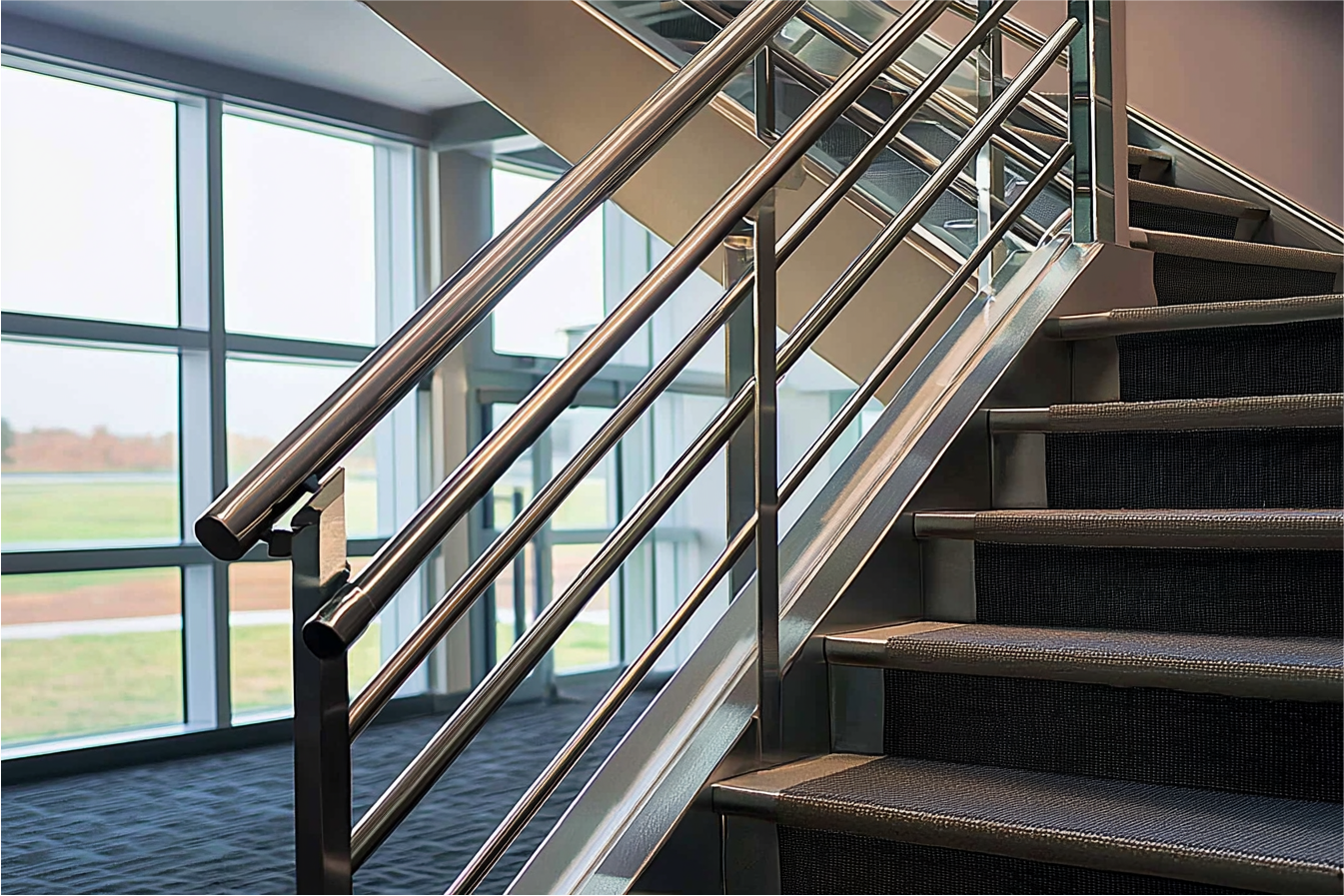
Maximizing Corrosion Resistance at Welds
The most significant contribution of pickling and passivation to the longevity of a piping system is the restoration of uniform corrosion resistance across the entire structure, especially at the welds. A welded piping system is, by nature, a chain of interconnected parts. The old adage that a chain is only as strong as its weakest link is perfectly applicable here. Without post-weld treatment, every weld and its associated heat-affected zone becomes a weak link, an anodic site that will corrode preferentially when the system is put into service.
By meticulously removing the sensitized heat-affected zone (HAZ)9, pickling eliminates this "weak link" phenomenon. It ensures that the area adjacent to the weld has the same metallurgical composition and corrosion potential as the parent pipe material. Passivation then seals the entire surface—weld, HAZ, and parent pipe—under a single, high-integrity passive film. The result is a homogenous structure from an electrochemical standpoint. There are no longer localized anodic and cathodic sites to drive a corrosion cell. This uniformity is the key to long-term performance.
Consider a pipe in a chemical processing plant carrying a moderately corrosive fluid. An untreated weld will begin to corrode within months, necessitating a patch or replacement. A properly pickled and passivated weld will exhibit the same slow, uniform corrosion rate as the rest of the pipe, which could be negligible for years or even decades. This extends the functional service life of the entire system from months to the full design life of the material, which could be 20 years or more. This is not a marginal improvement; it is a fundamental extension of asset life.
Reducing Life-Cycle Costs and Maintenance
When evaluating the cost of a project, sophisticated clients look beyond the initial procurement and installation price. They analyze the total life-cycle cost10, which includes maintenance, repairs, downtime, and eventual replacement. From this perspective, pickling and passivation represent one of the highest-return investments in any stainless steel project. The relatively small upfront cost of proper post-weld treatment yields enormous savings over the life of the asset.
Untreated systems are prone to frequent and unpredictable failures. This leads to a reactive maintenance cycle, where crews are constantly chasing leaks and performing emergency repairs. Each repair involves not only the cost of labor and materials but also the immense cost of lost production due to system shutdown. In many industries, like power generation or food and beverage, downtime can cost tens or even hundreds of thousands of dollars per hour. By ensuring the welds are as durable as the pipes themselves, pickling and passivation drastically reduce the frequency of these unplanned events.
This shifts the maintenance strategy from reactive to predictive. Maintenance schedules can be planned based on the known, slow corrosion rate of the base material rather than the unpredictable failure rate of untreated welds. This increased reliability and predictability is a massive financial benefit. A report from the Electric Power Research Institute (EPRI) on plant maintenance found that predictive maintenance strategies can be up to 10 times more cost-effective than reactive ones. Proper post-weld treatment is a cornerstone of enabling such a strategy for piping systems.
Ensuring Product Purity and System Safety
Beyond structural integrity and cost, the longevity provided by pickling and passivation is critical for safety and product purity. In industries like pharmaceuticals, semiconductors, and food processing, the internal surface of the piping is part of the production environment. A corroding weld doesn't just risk a leak; it actively contaminates the product stream with metallic ions and corrosion by-products. This can ruin entire batches of product, leading to huge financial losses and potential health risks for consumers. The smooth, passive surface created by proper treatment is far less likely to harbor bacteria and is easier to clean and sterilize, a key requirement for hygienic design.
In systems handling hazardous or flammable materials—common in the oil and gas, chemical, and petrochemical industries—a loss of containment due to a failed weld is a major safety incident. It can lead to fires, explosions, and toxic exposure, with potentially catastrophic consequences for personnel and the environment. The robust, uniform corrosion resistance imparted by pickling and passivation provides a critical layer of defense against such events.
By ensuring every weld is free of defects and fully protected, these treatments enhance the inherent safety of the system. This reliability is why industry codes and standards for critical service applications, such as ASME B31.311 for process piping, place such strong emphasis on proper material handling and treatment. Longevity, in this context, is synonymous with safety. It ensures the system operates as designed without unexpected failures for its entire intended lifespan, protecting people, products, and profits.
Pickling removes chromium-depleted layerTrue
Pickling chemically removes the sensitized, chromium-depleted layer created during welding, restoring corrosion resistance.
Passivation creates weaker oxide layerFalse
Passivation actually creates a more robust chromium oxide layer than naturally occurring films, providing superior protection.
Conclusion
In conclusion, pickling and passivation are not optional add-ons but essential procedures. They are a critical investment to prevent weld decay, restore the steel's natural defenses, and ensure the long-term structural integrity, safety, and reliability of any 304 or 316 stainless steel piping system.
-
Explore corrosion resistance and application differences of 304 vs. 316 stainless steels ↩
-
Learn about the $2.5 trillion annual cost of corrosion and its preventability ↩
-
Discover the synergistic effects of these acids in removing compromised layers. ↩
-
Learn about 304 stainless steel's enhanced resistance after pickling. ↩
-
Identify the common acids and their roles in passivation ↩
-
Understand industry standards for cleaning and passivating stainless steel、 ↩
-
Understand the importance of emergency safety measures in chemical handling ↩
-
Explore the role of water purity in high-tech industry cleaning processes ↩
-
Learn about the vulnerabilities around welds and how they affect corrosion resistance ↩
-
Discover how long-term costs influence project decisions ↩
-
Understand the standards for material handling in critical service applications ↩
Have Questions or Need More Information?
Get in touch with us for personalized assistance and expert advice.

